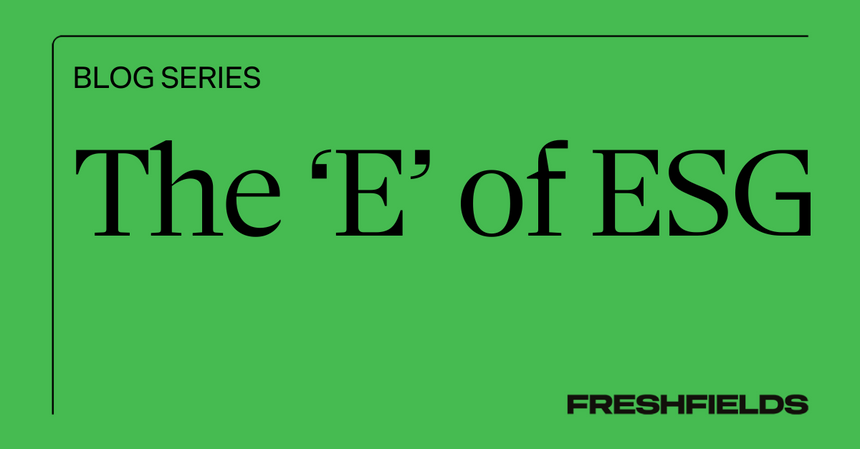The EU Carbon Border Adjustment Mechanism (CBAM) Regulation is seen as a cornerstone of the EU’s climate and industrial strategy. Working in tandem with the EU Emissions Trading System (ETS), CBAM aims to facilitate the global transition of energy-intensive industries to decarbonised production. Its main purpose is to create a level playing field between EU production and imports from third countries to prevent carbon leakage while providing an incentive for third country companies to decarbonise.
Evidence collected during the CBAM transitional period (2023-2025) and European Commission reviews during 2025 have resulted in a number of changes to the regime.
EU institutions approve simplification of CBAM
As part of the ‘Omnibus I’ package, published in February 2025 and kicking off the EU regulatory simplification drive, the European Commission proposed amendments to the CBAM Regulation.
Using the accelerated internal procedures, Member States and the European Parliament adopted the proposal in record time. It took less than four months from the initial Commission proposal to finding an agreement between co-legislators. Throughout the process, there was broad agreement among political groups and Member States for the necessity to simplify the CBAM Regulation.
Retrospectively, the file is hailed as a textbook example of simplification: the simplified text reduces CBAM’s scope while ensuring continued climate ambition. The central feature of the revised framework is a new de minimis mass threshold of 50 tonnes for CBAM applicability, replacing the previous €150 financial threshold. This adjustment is expected to exempt approximately 90% of previously covered importers, while still ensuring that 99% of emissions from covered products are regulated under CBAM.
Published in the EU Official Journal on 17 October 2025, the updated Regulation is among the very few simplification initiatives that have been finalised. Importantly, the changes come into force in time for the substantive CBAM regime starting in 2026.
Implementing acts on operational mechanics
In addition, a series of forthcoming implementing acts specifying crucial operational details is to complement the legal framework for the definitive CBAM regime:
- An implementing act defining the methodology to calculate embedded emissions and setting default values;
- An implementing act setting out rules for calculating the adjustment of free allocation, including CBAM benchmarks; and
- An implementing act outlining rules for converting the carbon price paid in a third country into a corresponding number of CBAM certificates.
Most of these rules are expected to be adopted by the European Commission by the end of this year. The CBAM benchmarks are likely to be adopted in the first quarter of 2026 as they are linked to the ETS benchmarks which are currently being updated.
Extension to downstream sectors and anti-circumvention measures
The current CBAM Regulation mainly targets raw and semi-finished steel products. Emissions embedded in processed, downstream products imported into the EU are not yet covered. This gap risks the possibility of non-EU producers making minor changes to products to circumvent CBAM.
Recognising this risk, the European Commission intends to present a legislative proposal in the fourth quarter of this year to extend the scope to downstream products. A public consultation has been held to help identify relevant products.
The proposed extension is likely to remain within the currently covered product groups—iron, steel, aluminium, cement, fertiliser and hydrogen.
The selection of downstream products to be included will rely on criteria such as:
- The risk of carbon leakage (based on tradability and carbon cost);
- The significance of embedded emissions; and
- Technical feasibility.
Besides, the European Commission is intending to put forward additional anti-circumvention measures, among others to address concerns by EU producers about the accuracy of data from third countries. Such measures may include strengthened reporting requirements on production methods and the composition goods.
Legislative proposal to support exporting industries
As free EU Emissions Allowances (EUAs) are phased out, domestic producers face higher costs, while non-EU competitors—whose goods are not subject to either the ETS or CBAM—bear no equivalent burden.
Currently, CBAM does not protect EU manufacturers exporting to third countries. It offers protection against loss of domestic market share by imposing a carbon price on imports, but offers no support for exports.
According to the Commission Communication “Delivering on the Clean Industrial I” published on 2 July 2025, and reiterated by Commission official since, revenues generated by CBAM may be allocated to support production in sectors at heightened risk of carbon leakage, compensating for the impact of disappearing free allowances. Support could be tied to progress made on long term decarbonisation.
The precise scope of export support is under consideration, with export intensity expected to be the core criterion. It remains undecided whether the Commission will adopt a sector-based or site-specific approach. The European Commission is expected to present a legislative proposal by the end of 2025.
Further changes to CBAM?
Further amendments to the CBAM Regulation will be considered and communicated in a report mandated by Article 30 of the CBAM Regulation. It will provide the basis for the extension to additional sectors and additional embedded emissions.
If extended to sectors currently not covered by the Regulation, it is likely that new primary products and corresponding downstream products are addressed at the same time.
The report will also assess the possibility to extend the scope of emissions to:
- Embedded indirect emissions in iron, steel, aluminium and hydrogen; and
- Embedded emissions in the transport of goods and transportation services.
The report is scheduled for the fourth quarter of 2025. The Commission’s current approach to simplify and solidify the regulatory framework makes an extension to further sectors unlikely at this stage. While there are sectors that are obvious candidates for inclusion under CBAM due to the high risk of carbon leakage, technical complexity and compliance costs will affect the European Commission’s eventual decision.
This blog is part of ‘The ‘E’ of ESG’ blog series. Click here to explore more blogs of our series. You can read more about our Environment, Social and Governance offering here.



/Passle/581a17a93d947604e43db2f0/MediaLibrary/Images/2025-10-21-10-30-43-502-68f760d3a94b3b874acc7f85.png)